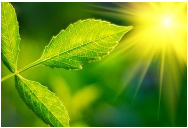- Escambia County Public Schools
- Biology End of Course Review
- SC.912.L.14.7 Plant Structure
Science
Page Navigation
- Home
- Elementary Science Curriculum
-
Biology End of Course Review
- Biology EOC Review
- SC.912.N.1.1 Scientific Method
- SC.912.L.18.12 Properties of Water
- SC.912.l.18.9 Photosynthesis and Cellular Respiration
- SC.912.L.18.1 Macromolecules
- SC.912.L.16.17 Mitosis and Meiosis
- SC.912.L.16.3 DNA Replication
- SC.912.L.14.3 Cell Structure
- SC.912.L.14.1 Cell Theory
- SC.912.L.17.20 Human Impact
- SC.912.L.17.9 Food Webs and Energy Transfer
- SC.912.L.17.5 Population Size
- SC.912.L.16.13 Reproductive System
- SC.912.L.16.10 Biotechnology
- SC.912.L.14.52 Immune System
- SC.912.L.14.36 Cardiovascular System
- SC.912.L.14.26 The Brain
- SC.912.L.14.7 Plant Structure
- SC.912.L.16.1 Genetics
- SC.912.L.15.13 Natural Selection
- SC.912.L.15.8 Origin of Life
- SC.912.l.15.6 Classification
- SC.912.L.15.1 Evolution
SC.912.L.14.7 Plant Structure
ORGANISMS, POPULATIONS AND ECOSYSTEMS
CLASSIFICATION, HEREDITY AND EVOLUTION
WHAT YOU NEED TO KNOW
-
You need to know how the structures of plant tissues and organs are directly related to their roles in physiological processes.
- Plant organs are limited to roots, stems, leaves, flowers, fruit and cones.
- Physiological processes are limited to photosynthesis, cellular respiration, transpiration, and reproduction.
- Plant tissues are limited to meristematic, ground, dermal and vascular tissues.
- Plant structures are limited to cambium, guard cells, phloem, seed, stomata and xylem.
EXAMPLE ONE
-
Terrestrial plants have stomata on the surface of their leaves. A single stomata is surrounded by two guard cells that change shape in response to environmental factors and open or close the stoma. Which of the following best explains how the structure of the leaf is used in processes that occur in plants?
A. Water enters the plant through the surface of the leaf for transpiration
B. Gases for photosynthesis are exchanged through the surface of the leaf.
C. Energy for cellular reproduction is absorbed through the surface of the leaf.
D. Carbon dioxide enters the plant through the surface of the leaf for cellular reproduction.
EXAMPLE TWO
-
Plant cells that are specialized for cell division are most likely found in what part of the plant?
A. root tips
B. leaf epidermis
C. stem epidermis
D. vascular tissue
EXAMPLE THREE
-
If the xylem in a young tree is damaged, which process is first affected?
A. performing photosynthesis
B. transporting sugar to the roots
C. transporting water to the leaves
D. absorbing water from the soil
EXAMPLE FOUR
-
A plant species lives in an area with limited sunlight. Which physiological adaptation would be most useful to the plant?
A. colorful flowers
B. large leaves
C. deep roots
D. thin cuticle
EXAMPLE FIVE
-
What is the main function of leaves?
A. Leaves provide support for growth and a place to store food.
B. Leaves provide a place for photosynthesis to occur.
C. Leaves absorb water and minerals and transport nutrients to the stem.
D. Leaves create a barrier that prevents water in the plant's tissues from evaporating.
EXAMPLE SIX
-
The cambuim is a section of cells in a plant that can become either part of the xylem or phloem, depending on the growth and needs of the plant. If the cambium of a particular plant was damaged, what would be the most likely effect on the plant?
A. The plant would lose its ability to carry out photosynthesis.
B. the plant would have uncontrolled growth.
C. The plant would not experience any change in physiology.
D. The plant would not be able to transport nutrients and water.
EXAMPLE SEVEN
-
Which structure in the leaf controls the opening and closing of the stoma?
A. cuticle
B. epidermis
C. guard cell
D. spongy mesophyll
EXAMPLE EIGHT
-
The diagram below shows a cross section of a plant leaf.
How does the structure marked X contribute to the survival of the plant?
A. It allows the intake of gases necessary for photosynthesis.
B. It allows the intake of minerals necessary for plant growth.
C. It allows the intake of sunlight necessary for ATP production.
D. It allows the intake of sugars necessary for plant reproduction.
EXAMPLE NINE
-
Which statement describes the role of flowers in plant survival?
A. Flowers can absorb carbon dioxide for sugar production.
B. Flowers produce oxygen through cellular respiration.
C. Flowers contain cells that carry out photosynthesis.
D. Flowers contain cells that produce gametes.
EXAMPLE TEN
-
What is the main purpose of seeds in plants that have them?
A. To protect and distribute the zygote.
B. To entice animals to eat the plant.
C. To be fertilized by other plants.
D. To store water for the mother plant.
EXAMPLE ELEVEN
-
The diagram below represents a flower, the reproductive structure of some plants. Most flowers have both male and female structures for fertilization and reproduction.
Which structure is represented by the letter A in the diagram above?
A. the stamen, a male structure which produces pollen
B. the pistol, a female structure which collects pollen and passes it to the ovary
C. the sepal, a modified leaf used for protection of the flower
D. the petals, decorative structures which attract pollinators
IN YOUR BOOK
-
General Biology - Chapter 21, pg. 638
Honors Biology - Chapter 23, pg. 550




